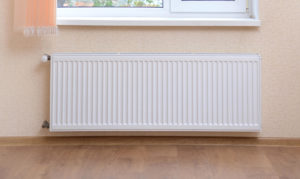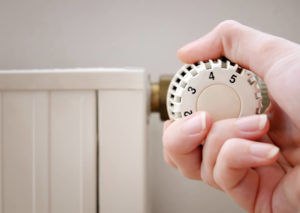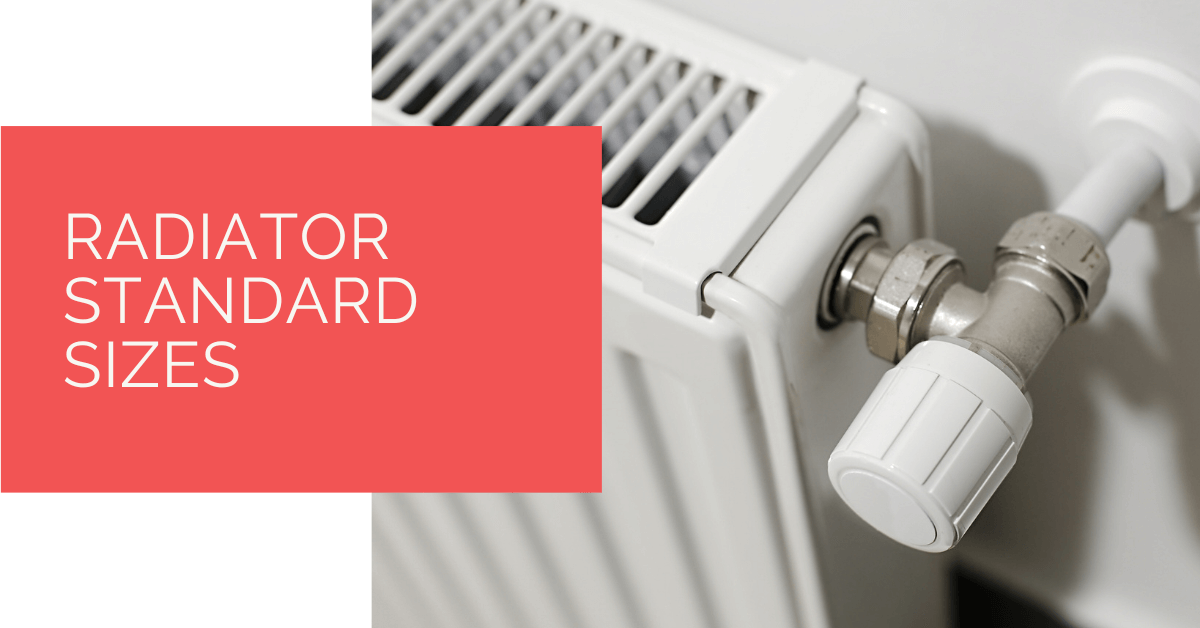Whether you’re replacing an old radiator or looking into expanding your home’s heating circuit for the winter, you need to know the exact measurements you’ll be working with. Space restraints can dictate the radiator size you’ll sign up for, but it’s not as simple as that!
The radiator you get needs to fit in your existing plumbing network, so getting the wrong size will render it incompatible. Before finalising your purchase decision, you must also ensure you’ll get enough heating performance to warm up your room.
At first glance, you might get overwhelmed by the many moving pieces you must account for. Our guide will familiarise you with the radiator standard sizes in the UK and help you pick the right fit for your different rooms!
Contents
Key Takeaways
- Radiator standard sizes have evolved over the years, and today, they vary significantly among manufacturers, taking into account factors like build material, orientation, and style. Bathroom radiators also come in different sizes compared to those for the kitchen.
- Choosing the right radiator size for your room involves calculating the volume in cubic meters and matching it to the radiator’s energy output, measured in kilowatts (kW) or British Thermal Units (BTUs). Consider factors like window size and insulation, and opt for a radiator with a higher BTU whenever possible for faster heating.
- When replacing an old radiator, accurately measure its height, width, pipe centre length, and distance from the wall to the pipe centres to ensure a proper fit. These measurements are crucial to avoid the need for pipe reworks during installation.
What Are the Radiator Standard Sizes?
If you’d asked this question a couple of decades back, you would have gotten a very simple answer. Back then, radiators came only in the traditional horizontal orientation, and fit into one of three standard sizes.
For the most part, radiators were built with a height ranging from 300 mm all the way to 700 mm. When it comes to the width of traditional radiators with horizontal orientation, you can get one ranging from 400 mm to 2400 mm. Those were the simpler times!
With mind-boggling advances in heating technology over the years, radiators don’t have to be confined to the standard sizes of the past. You can basically get a radiator in any shape and form to tailor-fit your exact room dimensions.
So, today radiator standard sizes vary considerably from one manufacturer to another. The build material, radiator orientation, and style all play into affecting the standardised sizes. It’s also worth noting that bathroom radiators come in different sizes from the ones intended for use in the kitchen.

Which Radiator Standard Size Fits Your Room?
The size of your radiator plays into its heat output. A comfortable room temperature ranges from 18 to 22 degrees, so this is what we’ll be working with.
Next up, you need to calculate your room’s volume. This can be done by measuring its length, width, and height. The three values are then multiplied to give you the room volume in cubic metres. Hold this value at the back of your head, we’ll need it shortly after.
On another note, the radiator’s energy output is measured in terms of kilowatts (kW.) A radiator rated at 1kW is capable of heating a room with a volume of 15 cubic metres. You need to do the math and scale your radiator’s wattage to fit your room’s volume.
Another metric used to signify the amount of heat produced by a radiator is the British Thermal Unit or BTU for short. Such a unit is used to calculate the energy needed to raise the temperature of a pint of water by one-degree celsius.
You can get radiators with a BTU ranging from 600 all the way to 10,000. To give you some perspective, most living rooms in British houses will do with a radiator of around 3000 BTUs, while bathrooms only need radiators with about 800 BTUs.
You also have to consider the size of the windows in your rooms, and whether they’re insulated or not. As windows will give way for heat to escape and will require you to be more generous with your calculations and get a radiator with some extra horsepower as a reserve!
So, the takeaway here is you need to opt for the radiator with the higher BTU whenever possible. You will notice the difference in your everyday usage, as more powerful radiators are capable of heating up your space much faster.

How to Measure Your Old Radiator’s Size?
If you’re here just to replace your existing radiator, getting the right size won’t be as tricky. All you need to do is measure the dimensions of your old radiator and get a new one that ticks the same boxes.
You need to be extra careful during the measuring process, as any offset by just a few centimetres will require you to rework your radiator pipes. So, grab your trusty measure tape and get ready to fulfil the following measurements:
Radiator Height
Run your measuring tape from the lowest point of your radiator to the highest, and voila, you have the radiator height.
Radiator Width
When it comes to measuring the radiator width, all you need to do is get your tape across the farthest points of the radiator. Make sure you’re running your tape in a straight line that’s parallel to the floor. Any inclination will give you inaccurate results, so be extra vigilant!
Pipe Centres Length
Next up is measuring the distance between the inlet and outlet pipes of the radiator. Such a metric is known as the piper centre length.
Distance From the Wall to the Pipe Centres
Finally, the distance between the pipe centres and the wall is of utmost importance! This will save you the hassle of calling your plumber to do some pipe reworks when installing the new radiator.
Heat Pump Source: Reliable Heating and Cooling Solutions
At Heat Pump Source, we take pride in our unwavering commitment to serving the UK with top-tier HVAC solutions. From the efficiency of heat pumps and the cool relief of air conditioning to the warmth of boilers, radiators, and underfloor heating, our dedicated team is always at the forefront of innovation. We understand the unique needs of every household and business, and we strive to provide dependable health and cooling products and services that are tailored just for you. Ensuring your comfort and satisfaction is our utmost priority. Whether you have questions, need guidance, or require support, we’re always here to assist. Please don’t hesitate to contact us; we’re eager to be of service.
Bottom Line
Now that you have a solid idea about how radiator standard sizes affect their performance, you’re set on the right track to upgrade your home’s heating system. Replacing an existing radiator shouldn’t turn your head around, as all you need to do is get your old radiator’s accurate measurements.
On the other hand, if you’re installing a radiator in a room for the first time, you’ll have to do some calculations from scratch. Correlating your room’s volume to your radiator’s BTU or kW energy measuring units is key to ensuring your room is efficiently heated in no time!
About the Author
At Heat Pump Source, our articles are the product of a collaborative effort among a team of highly skilled HVAC experts. Our dedicated professionals, hailing from diverse backgrounds in heating, ventilation, air conditioning, and refrigeration, contribute their extensive knowledge and experience to every piece of content. This multidisciplinary approach ensures comprehensive coverage. Our commitment is to deliver authoritative, reliable, and tailored advice to meet the unique needs of every household and business across the UK.

